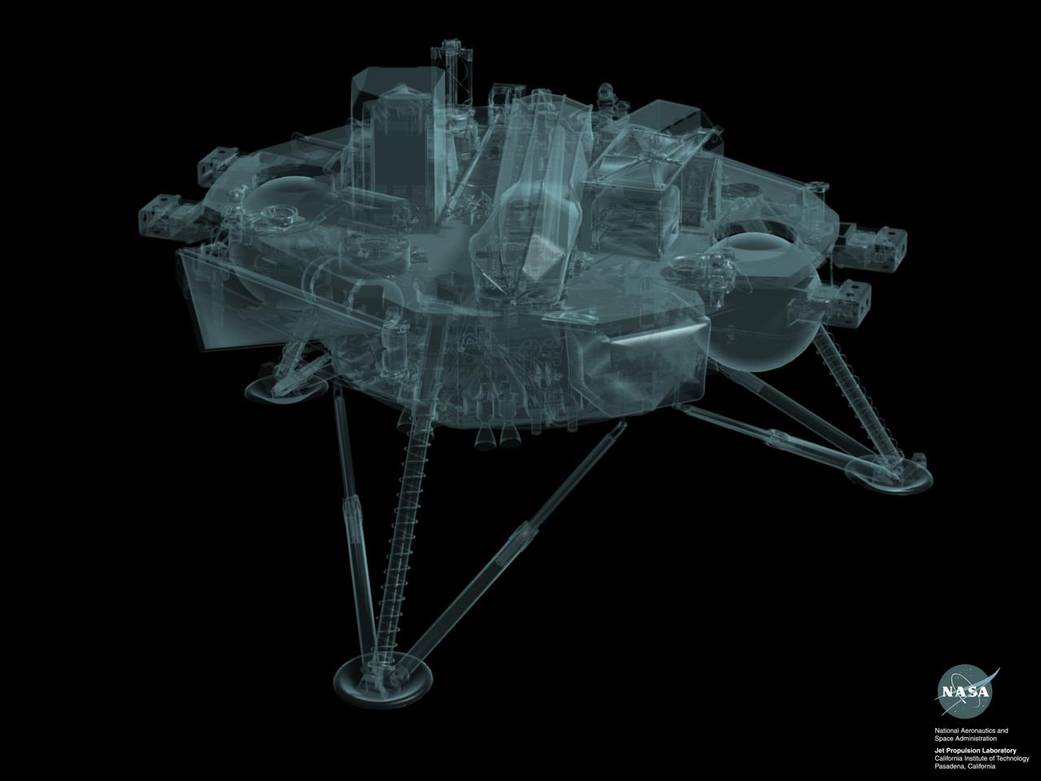This artist’s concept shows an x-ray image of the Phoenix Lander in its pre-landing stowed configuration.
The mission, named for the resilient mythological bird, carried a complex suite of instruments that are improved variations of those that flew on the lost Mars Polar Lander.
To analyze soil samples collected by the robotic arm, Phoenix has a portable laboratory. Selected samples were heated to release volatiles that can be examined for their chemical composition and other characteristics.
Imaging technology inherited from both the Pathfinder and Mars Exploration Rover missions also were implemented in Phoenix’s stereo camera, located on its 6.6-foot mast. The camera’s two “eyes” will reveal a high-resolution perspective of the landing site’s geology, and will also provide range maps that will enable the team to choose ideal digging locations. Multi-spectral capability will enable the identification of local minerals.
To update the scientific understanding of Martian atmospheric processes, Phoenix also scanned the atmosphere up to about 12 miles in altitude, obtaining data about the formation, duration and movement of clouds, fog and dust plumes.Image Credit: NASA
1 min read




























